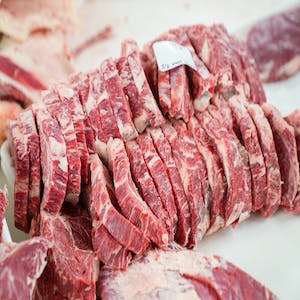Reduction of the microbial load in meat maturation rooms with and without alkaline electrolyzed water fumigation

Accepted: 13 February 2023
HTML: 7
All claims expressed in this article are solely those of the authors and do not necessarily represent those of their affiliated organizations, or those of the publisher, the editors and the reviewers. Any product that may be evaluated in this article or claim that may be made by its manufacturer is not guaranteed or endorsed by the publisher.
Authors
Dry aging is a process during which meat is stored within maturation chambers at low temperatures and low relative humidity, resulting in improved tenderness and flavor development. The cuts are exposed to the atmosphere by hanging them or setting them on racks in the maturation chamber without any protective packaging. Animals and humans are usually the major sources of bacterial food contamination in the meat industry, but other routes might be involved. Therefore, procedures to reduce or eliminate pathogens from surfaces are crucial for an effective hazard analysis critical control point program in the food industry and other environments. This study aimed to assess the survival of Listeria monocytogenes, Escherichia coli, Salmonella spp., and Staphylococcus aureus on the inner surface of dry aging chambers. Moreover, we tested the efficacy of alkaline electrolyzed water (REW) for its application within a procedure aimed at reducing foodborne pathogens during meat storage. Environmental conditions inside the dry aging cabinet determine a reduction of circa 3 log CFU/cm2 of the considered microorganisms on the inner surface in 24 hours. Additionally, the nebulization of REW with the smoking system increased the count reduction in 24 hours due to environmental conditions for L. monocytogenes (~1 log CFU/cm2) and for S. aureus (~2 log CFU/cm2). In this context, the use of REW can be justified for routine cleaning procedures of the surfaces, with the added value of being safe to handle, not containing environmental pollutants, and making it unnecessary to rinse surfaces due to its instability.
How to Cite

This work is licensed under a Creative Commons Attribution-NonCommercial 4.0 International License.
PAGEPress has chosen to apply the Creative Commons Attribution NonCommercial 4.0 International License (CC BY-NC 4.0) to all manuscripts to be published.

 https://doi.org/10.4081/ijfs.2023.11109
https://doi.org/10.4081/ijfs.2023.11109



